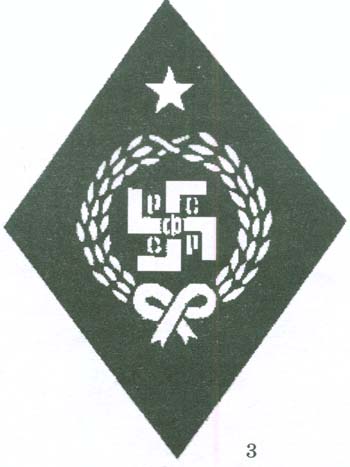Drevo Dinastiya Romanovih
The ruling dynasty of the Romanovs gave the country manyingenious kings and emperors. It is interesting that this name does not belong to all its representatives, the noble family Koshkins, Kobyliny, Miloslavskie, Naryshkin met in the family. The genealogical tree of the Romanov dynasty shows us that the history of this family originates in 1596.
More details about it you can learn from this article. Genealogical tree of the Romanov dynasty: the beginning The founder of the family is the son of the boyar Fyodor Romanovand boyaryni Xenia Ivanovna, Mikhail Fedorovich. The first king of the dynasty. He was a first cousin to the last emperor from the Moscow family branch of the Rurikovichs - Fedor Ioannovich. On February 7, 1613, he was elected to reign Zemsky Sobor. On July 21 of the same year, a rite for reign was performed.
Yearly 2012-07-01T00:00:00+00:00 yearly. Yearly yearly.
This very moment was the beginning of the reign of the great dynasty of the Romanovs. Outstanding personalities - the dynasty of the Romanovs The genealogical tree includes about 80 people.
In this article we will touch not all, but only the reigning individuals and their families. Genealogical tree of the Romanov dynasty Mikhail Fedorovich and his wife Evdokia had oneson - Alexei.
He led the throne from 1645 to 1676 years. He was married twice. The first wife is Maria Miloslavskaya, from this marriage the Tsar had three children: Fyodor the eldest son, Ivan the Fifth, and Sofya's daughter. From the marriage with Natalia Naryshkina, Mikhail had a son, Peter the Great, who later became a great reformer. Ivan married Praskovya Saltykova, from this marriage they had two daughters - Anna Ioannovna and Catherine.
Peter had two marriages - with Evdokia Lopukhina and Catherine the First. From the first marriage the Tsar had a son, Alexei, who later married Sophia Charlotte. From this marriage Peter II was born. Genealogical tree of the Romanov dynasty: Peter the First and Catherine the First From marriage three children were born - Elizabeth, Anna andPeter. Anna married Karl Friedrich, and they had a son - Peter the Third, who married Catherine II.
Embed this Program Add this Program to your website by copying the code below.  Preview Preview.
Preview Preview.
She, in turn, took the crown from her husband. But Catherine had a son - Paul the First, who married Maria Feodorovna. From this marriage Emperor Nicholas I was born, who in the future married Alexandra Feodorovna. Download valhallashimmer rapidshare torrent. From this marriage Alexander II was born. He had two marriages - with Maria Alexandrovna and Ekaterina Dolgorukova.
The future heir to the throne - Alexander the Third - was born from his first marriage. He, in turn, married Maria Feodorovna.
The son of this union became the last emperor of Russia: it is about Nikolay II. Genealogical tree of the Romanov dynasty: a branch of the Miloslavskys Ivan the Fourth and Praskovia Saltykova hadtwo daughters - Catherine and Anna. Catherine married Karl Leopold. From this marriage Anna Leopoldovna was born, who married Anton Ulrich. The couple had a son, known to us as Ivan the Fourth.
This is in short the genealogical tree of the Romanovs.The scheme includes all the wives and children of the rulers of the Russian Empire. Relatives of the second order are not considered.

Undoubtedly, the Romanovs are the brightest and strongest dynasty that rules Russia.
Contents • • • • • • • • • • • • • • • • • • • • • • • Surname usage [ ] Legally, it remains unclear whether any ever abolished the surname of Michael Romanov (or of his subsequent male-line descendants) after his accession to the Russian throne in 1613, although by tradition members of reigning dynasties seldom use surnames, being known instead by dynastic titles ('Tsarevich Ivan Alexeevich', 'Grand Duke Nikolai Nikolaevich', etc.). From January 1762 [ December 1761], the monarchs of the claimed the throne as relatives of (1708-1728), who had married. Thus they were no longer Romanovs by, belonging instead to the Holstein-Gottorp of the German that reigned in Denmark.